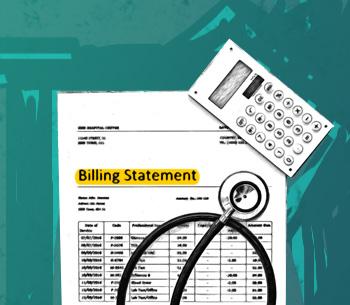What Is ICD-11?
The 11th revision of the International Classification of Diseases (ICD-11) is the basis for identifying and analyzing global health trends and statistics, providing a universal language (code set and rules) that allows health professionals around the world to share information.
Countries could begin reporting health data using ICD-11 on Jan. 1, 2022, according to the timeline set by the World Health Organization (WHO). This follows acceptance on May 25, 2019, by the 194 countries — member states — that make up WHO. When and how the United States will implement ICD-11 remains to be seen, but now is the time to start learning about what this transition could look like.
Reviewing some distinguishing characteristics of ICD-11 will give you a better idea of what to expect as the transition to ICD-11 approaches, including how to address its impact on current practices, so you can start devising a plan for moving forward.
Why Do We Need ICD-11?
ICD-11, like previous versions of ICD, provides a way to translate diagnoses into alphanumeric codes. This shared language enables worldwide standardized reporting, monitoring, and comparison of health conditions as well as the categorization of injuries and diseases (morbidity) and causes of death (mortality).
ICD codes can have enormous financial importance, as they also are used to determine resource allocation, such as funding for health initiatives. In countries where ICD codes are the basis for health insurance billing, such as the United States, ICD is closely tied to healthcare finances and provider reimbursement.
WHO, which has the responsibility of revising and publishing ICD, adopted ICD-10 in the 1990s. The use of ICD-10 has become increasingly problematic because of its outdated content. As time goes by, ICD-10 will only become less fit for precise and meaningful classification. The final update for ICD-10 was released in October 2019. WHO no longer maintains it, and the time has come to evaluate transitioning to ICD-11 in the United States and around the world.
Many countries use ICD modifications, such as the United States’ clinical modification, ICD-10-CM. Because these modifications are inconsistent, they limit international data comparability, development of guidelines, and linkage to knowledge bases. This results in a lack of uniformity in translated terms. There is a clear need for an internationally standardized system that accurately reflects contemporary medical practice and generates the best and most useful data possible. Standardization is the key that unlocks global health data analysis.
ICD-11 Structure and Digital Focus
ICD-11 is long overdue, especially given that ICD-10 is now more than 30 years old. Following international collaboration and review of all existing classifications, categorizations, and codes, the 72nd World Health Assembly voted unanimously on May 25, 2019, to adopt ICD-11. This newest edition, over a decade in the making, reflects the significant progress in science and medicine over the past 30 years and revolutionizes the way conditions are classified and coded in the clinical setting.
The classification system underwent a major redesign. It is now structured as a database that can include more than a dozen dimensions, with changes ranging from making it more information technology (IT)-friendly and better able to support data collection on morbidity, to lowering cost. It will also have a new name: ICD-11 for Mortality and Morbidity Statistics (ICD-11-MMS). To bring ICD into the 21st century, updates include a completely digital design; easy integration with electronic health applications and information systems; improved ability to address multiple topics, such as capturing quality and safety healthcare data; and a more user-friendly format. ICD-11’s structure is defined in linearizations that incorporate properties and attributes with a focus on mortality, morbidity, the degree of primary care, research, and public health.
These advancements have made ICD-11 more intricate and comprehensive than its predecessors. It can link with other ICD classifications, such as the International Classification of Functioning, Disability, and Health (ICF); the International Classification of Primary Care (ICPC); and the Systematized Nomenclature of Medicine Clinical Terms (SNOMED CT) and Orphanet terminology systems.
In addition to being able to produce digital documentation on a granular level, ICD-11, for the first time, “will enable dual coding of traditional medicine diagnoses alongside mainstream medicine and now also permits the generation of a functioning score based on the WHO Disability Assessment Schedule (WHODAS),” according to the WHO Implementation or Transition Guide.
What’s New in ICD-11: Post-Coordination
ICD-11 codes look different than those in ICD-10 and have a simplified structure. ICD-11 also introduces two noteworthy features — extensions and clustering — which enable two kinds of post-coordination (linking multiple codes to describe a concept) and the addition of specific detail to coded entities. Both features have the potential to improve ICD-11 code data.
An ICD-11 extension is a non-diagnosis code that adds flexibility to the classification. Extensions cannot be used alone, but rather, are intended to be added to a stem code, replacing ICD-10 adjunct codes. Extension codes are appended to describe laterality, acuity, severity, and other dimensions of injury and external causes.
Cluster coding is combining two or more ICD-11 codes to describe a documented clinical concept. This approach is how ICD-11 explicitly marks codes that are post-coordinated to describe one condition. When a diagnostic statement is broken down into its component parts for simplicity, there needs to be a way to link them in the coded record; clustering is the feature that enables linking. It creates the ability to link core diagnostic concepts (meaning stem code concepts), when desired, and/or add clinical concepts captured in extension codes to primary stem code concepts. Cluster coding refers to a convention where a “with” operator, either a forward slash (/) or ampersand (&), is used to link ICD-11 codes together to create a diagnostic “sentence.”
This example will help you visualize the concept of post-coordination in ICD-11. Code details are from the January 2025 version of WHO’s ICD-11 Coding Tool.
ICD-11 coding example:
Diagnosis: Left hip osteoarthritis with chronic pain from persistent inflammation
FA00.Z Osteoarthritis of hip, unspecified
Post-coordination:
- Laterality (use additional code, if desired): XK8G Left
- Has manifestation (use additional code, if desired): MG30.30 Chronic secondary musculoskeletal pain from persistent inflammation
Cluster: FA00.Z&XK8G/MG30.30
ICD-11 has been built in such a way that updating will be easier than it has been for past versions, potentially eliminating the need for ICD-12. Its creators suggest there will be no need for national modifications of ICD-11 due to its flexibility and capability to produce digital documentation on a granular level.
How Do ICD-11 Codes Compare to ICD-9 and ICD-10?
Here are two examples of how ICD codes have evolved over time. Note that the examples show the ICD-9-CM and ICD-10-CM codes used in the United States. The ICD-11 codes are from the January 2025 version of the ICD-11 Coding Tool and Browser.
1) Essential hypertension, unspecified:
ICD-9-CM 2015: 401.9 Unspecified essential hypertension
ICD-10-CM 2025: I10 Essential (primary) hypertension
ICD-11: BA00.Z Essential hypertension, unspecified
2) Diabetes mellitus, type II, with left diabetic cataract:
ICD-9-CM 2015: 250.50 Diabetes with ophthalmic manifestations, type II or unspecified type, not stated as uncontrolled, and 366.41 Diabetic cataract
ICD-10-CM 2025: E11.36 Type II diabetes mellitus with diabetic cataract
ICD-11: 9B10.21&XK8G/5A11
9B10.21 Diabetic cataract
XK8G Left
5A11 Type 2 diabetes mellitus
Advantages of ICD-11
After the tumultuous, years-long transition to ICD-10-CM, simply mentioning ICD-11 may produce stress for revenue cycle professionals and healthcare providers across the United States. Examining the major concepts included in the 11th revision, as well as implementation considerations, may help remove some of that anxiety.
Let’s start with some key changes and the advantages of ICD-11:
Easy to use:
The coding system is more contemporary and more easily integrated with electronic health records than past versions.
ICD-11 will be completely electronic with a goal of user-friendliness, offering resources such as the online Coding Tool, Implementation or Transition Guide, Reference Guide, and Browser, all available on WHO’s ICD-11 page.
Greater digital capabilities:
ICD-11’s digital format enables it to be continuously updated, improves coordination with other classifications and terminologies, provides flexibility to reduce the need for clinical modifications, and improves the comparability of translations.
ICD-11 is designed to be computable and is expected to facilitate greater auto-generation of codes from clinical documentation.
Updated structure and current scientific content:
A reformulated chapter structure and indexing system require relocation of some existing codes.
Besides diseases, ICD-11 includes external causes, disorders, signs and symptoms, anatomy, histopathology, and much more.
Each category will feature four characters rather than three, and there are two levels of subcategories. The range of potential codes is 1A00.00 to ZZ9Z.ZZ.
New improvements:
There are 28 chapters, compared to 22 in ICD-10. Additions include chapters for immune system diseases, sleep-wake disorders, traditional medicine, developmental anomalies, sexual health, and functioning assessment, as well as a better representation of cancers, devices, medications, substances, severity, and causes of injuries.
ICD-11 allows multiple applications to meet health system priorities. Examples include mortality, morbidity, primary care reporting, clinical recording, research, patient safety, antimicrobial resistance, epidemiology, population health, health system performance, resource allocation, and reimbursement.
Better coding quality:
ICD-11 enables more straightforward coding. Simple coding can be done as well as coding of complex clinical detail.
The introduction of extensions and clustering allows for the addition of specific detail to coded entities.
The new coding structure allows for greater flexibility of application than in previous versions; health conditions can be described to any level of detail by combining codes.
Will the U.S. Implement ICD-11-CM?
While there is an expectation that countries will start planning for the transition, currently, there is no mandatory implementation date. Member states will migrate to ICD-11 at their own pace and according to their needs and resources, so global implementation of the new edition will be a patchy and prolonged process.
WHO will be accepting data reported using both ICD-10 and the new ICD-11 code sets until the majority of member states have transitioned to the latest version. In 2018, the CDC stated 2023 is the earliest the United States would implement ICD-11 for mortality (cause of death). The clock is ticking, and there is still no word yet on when implementation will begin. Before it can happen, an IT update of systems and software and coder training is necessary. Mortality data have been reported in an internationally standardized way for many years, and it is imperative to continue this practice with the transition to ICD-11.
In contrast to mortality, coding for morbidity (sickness, injury, disability) has evolved in a divergent manner at the national level in response to emerging needs and local practices in healthcare provision. In the countries where this has occurred, the transition to ICD-11 may require a tailored approach to allow for these differences in reporting rules and coding, but the goal is to ultimately transition toward an internationally consistent output.
WHO recognizes that the use of ICD in the specific context of a country’s healthcare system may require developing ICD-11 modifications, for example, due to specific settings or reimbursement system requirements. These changes may be subject to the same international process as all other proposed changes to ICD to avoid diverging regional ICD modifications and instead to retain one international classification system.
While arrangements for international morbidity reporting to WHO have yet to be finalized, it’s important to note that ICD-11 is “designed to be flexible and adaptable enough for morbidity coding, to pre-empt the need for national modifications,” according to the Implementation or Transition Guide. Dual coding studies undertaken during the transition will confirm this and verify the completeness of ICD-11.
In the United States, the Department of Health and Human Services (HHS) secretary tasked the National Committee on Vital and Health Statistics (NCVHS) with evaluating pathways and making recommendations on the adoption and use of ICD-11 in the United States. The NCVHS has put forth recommendations and produced a set of research topics for HHS to explore, to provide guidance, and to inform the decision-making process.
New Concepts Included in ICD-11
Below are some of the main areas and concepts developed and used in ICD-11.
New primary care concepts are available for application in settings where simple diagnoses are made.
A major overhaul of the section on the documentation of patient safety events allows for necessary detail and compliance with the WHO patient safety framework.
Coding for antimicrobial resistance, which was missing in ICD-10, is included to enable data documentation and analysis consistent with the WHO Global Antimicrobial Resistance Surveillance System (GLASS).
A new classification for HIV has been created to account for the growing population of those living longer with the disease, providing the ability to link the virus with conditions, such as malaria, tuberculosis, and dementia, among others.
The new supplementary section for functioning assessment allows monitoring of functional status via its recording before and after the intervention.
This section permits the calculation of a summary functioning score — both a domain-specific and an overall summary score — using the WHO Disability Assessment Schedule 2.0 (WHODAS 2.0) or the WHO Model Disability Survey (MDS).
All rare diseases are now incorporated into ICD-11. Only a few of these have an individual code, but all have their own Uniform Resource Identifier (URI).
URI use allows rare disease registries and researchers access to detailed epidemiological data on conditions of interest and facilitates linkage with other information interchange products and terminologies.
The new Supplementary Chapter for Traditional Medicine Conditions provides standardized descriptions for data capture and allows for country-level monitoring through dual documentation alongside mainstream practice, as well as international comparison.
In many countries, such as China, India, Japan, and the Republic of Korea, traditional medicine is an integral part of provided health services. It has not been included previously in standard classification, nor has it been possible for health authorities to monitor or compare internationally or regionally. ICD-11 should help with this.
What Does the Future Hold?
Like past ICD versions, ICD-11 has the potential to greatly impact the provision of care, health financing, and resource allocation. The increased detail and flexibility built into ICD-11, coupled with its electronic format, will help it to serve as a living document for many purposes, ensuring its longevity.
It would be premature to speculate when the United States will be prepared for migration to ICD-11 for mortality, whether ICD-11 will be adequate as a morbidity classification system, or whether NCVHS will need to develop a clinical modification, as was done for ICD-9 and ICD-10. Though timing and many other details remain uncertain, planning for the transition to ICD-11 is underway.
ICD-11 is looming large on the healthcare horizon, and practices that are unprepared for this transition when it occurs will see an uptick in rejected claims and a drop in reimbursement. It’s imperative to monitor ICD-11 planning and keep an eye on any developments to ensure your practice is equipped for a smooth and efficient implementation of ICD-11.
Last reviewed on Feb. 14, 2025, by the AAPC Thought Leadership Team
Presented by

Interested in starting a medical coding career?
Explore all the directions you can go with AAPC.

Set yourself up for success. Get the prerequisite training you need.
Medical coding and billing takes time and practice to learn. And getting up to speed on the terminology and knowledge required can be like learning a whole new language.


